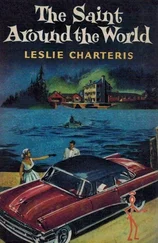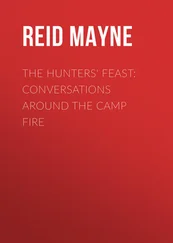Rick Spilman - Hell Around the Horn
Здесь есть возможность читать онлайн «Rick Spilman - Hell Around the Horn» весь текст электронной книги совершенно бесплатно (целиком полную версию без сокращений). В некоторых случаях можно слушать аудио, скачать через торрент в формате fb2 и присутствует краткое содержание. Жанр: Морские приключения, на английском языке. Описание произведения, (предисловие) а так же отзывы посетителей доступны на портале библиотеки ЛибКат.
- Название:Hell Around the Horn
- Автор:
- Жанр:
- Год:неизвестен
- ISBN:нет данных
- Рейтинг книги:4 / 5. Голосов: 1
-
Избранное:Добавить в избранное
- Отзывы:
-
Ваша оценка:
- 80
- 1
- 2
- 3
- 4
- 5
Hell Around the Horn: краткое содержание, описание и аннотация
Предлагаем к чтению аннотацию, описание, краткое содержание или предисловие (зависит от того, что написал сам автор книги «Hell Around the Horn»). Если вы не нашли необходимую информацию о книге — напишите в комментариях, мы постараемся отыскать её.
Lady Rebecca
Hell Around the Horn
Hell Around the Horn — читать онлайн бесплатно полную книгу (весь текст) целиком
Ниже представлен текст книги, разбитый по страницам. Система сохранения места последней прочитанной страницы, позволяет с удобством читать онлайн бесплатно книгу «Hell Around the Horn», без необходимости каждый раз заново искать на чём Вы остановились. Поставьте закладку, и сможете в любой момент перейти на страницу, на которой закончили чтение.
Интервал:
Закладка:
Snug Harbor was originally a grand and unique retirement home for indigent sailors, called Sailor's Snug Harbor, established through the generosity of Captain Robert Richard Randall, a wealthy ship's captain and merchant, in 1833. From the mid-1800s to the 1960s, old sailors lived in a row of five Greek Revival mansions on the New Brighton waterfront.
Starting in the 1930s, William Doerflinger, an archivist and collector of folk songs, began traveling to Sailor's Snug Harbor to record sea shanties sung by old sailing ship sailors from the very last days of sail. In 1951, Doerflinger published " Shanty Men and Shanty Boys " later republished as " Songs of the Sailor and Lumberman ." The volume is considered to be one of the essential collections of work songs of the sea.
For those of us who gather to sing shanties at Snug Harbor, there is a special magic to the setting, because the space where we gather was where Bill Doerflinger set up his tape recorder to record the sea shanties sung by the old sailors.
What does any of this have to do with " Hell Around the Horn ?" After the book was largely written, I learned that Bill Doerflinger also recruited retired ships' captains to sing for him at Snug Harbor. One of these retired captains was none other than Captain James Pratt Barker, ex-master of the windjammer British Isles . At Snug Harbor it is easy to imagine Captain Barker singing out in full voice, Rise Me Up from Down Below, or one of the other shanties that he sang for Doerflinger. And now, we latter day shanty singers sing the same old songs in same building where Captain Barker and all the rest sang, recalling their days on the mighty oceans beneath a cloud of canvas.
A Thank You to the Readers
Thank you for reading Hell Around the Horn . I thought that it was a story worth telling, about a time and a remarkable group of people who should not be wholly forgotten. I hope that you found that reading the book was worth your time.
I would love to hear your thoughts and feedback on Hell Around the Horn . Whether you loved or hated the book, or fell somewhere in between, your comments and perspectives are valuable and I would love to hear them. Please contact me through my website, rickspilman.com . I will respond to all emails and would love to hear from you.
Feel free to return to the on-line retailer where you bought the book and post a review. It need not be more than a line or two and it will be greatly appreciated.
Also, if you get the chance, please stop by the Old Salt Blog, a virtual port of call for those who love the sea.
Thanks again,
Rick SpilmanSail Plan
Glossary
AB– Able seaman, able to hand, reef and steer.
Amidships– the middle section of the ship.
Anchor, catting– to secure the anchor to the cathead, typically for a short or coastal voyage. For longer voyages, the anchor would be hoisted onto the deck and lashed securely.
Apprentice– a young man who signs on for a four year training period, a ship's officer in training.
Armstrong Patent– slang, a ship with few winches or other mechanical labor-saving devices, where the strong arms of the crew were all that raises, lowers and trims the sails.
Articles– short for Articles of Agreement, a contract between the captain of a ship and a crew member regarding stipulations of a voyage, signed prior to and upon termination of a voyage.
Athwartships– perpendicular to the centerline of the ship, across the width of the ship.
Barometer– a device to measure the barometric pressure. A rising barometer suggests good weather whereas a falling barometer indicates increasing storms.
Barque– a sailing ship of three or more masts having the foremasts rigged square and the aftermast rigged fore-and-aft.
Beam– the breadth of a ship.
Before the mast– traditionally sailors lived forward of the main mast while officers berthed aft. Sailing before the mast was sailing as an able or ordinary seaman.
Best bib and tucker– slang, one's best clothes.
Binnacle– a stand or enclosure of wood or nonmagnetic metal for supporting and housing a compass.
Body and soul lashings– lashings of twine around the waist, pant legs and wrists to prevent the wind from blowing open or up a sailor's oilskins.
Bogie stove– also bogy and bogey, a small cabin stove.
Bolt-rope– a line sewn into the edges of a sail.
Bowsprit– a large spar projecting forward from the stem of a ship.
Brace, Braces– on a square-rigged ship, lines used to rotate the yards around the mast, to allow the ship to sail at different angles to the wind.
Brassbounder– a ship's apprentice, from the row or rows of brass buttons on an apprentice's dress jacket.
Bulwark– plating along the sides of a ship above her gunwale that provides some protection to the crew from being washed overboard by boarding seas.
Bunt– the middle part of the sail. When furling the sail, the last task is to "roll the bunt," which is hauling the furled bunt on the top of the yard and tying it with gaskets.
Buntlines– small lines used to haul up the bottom of the sail prior to furling. There are usually four to eight buntlines across the foot of the sail. When a sail is to be furled, the buntlines and the clewlines are hauled, gather up the sail. When the sail is supported by the buntlines and clewlines, the sail is said to be hanging in its gear.
Burgoo– a porridge of coarse oatmeal and water.
Bute Dock– a dock built in Cardiff, Wales by John Crichton-Stuart, 2nd Marquess of Bute opened in October 1839.
Capstan– a vertical windlass used for raising yards, anchors and any other heavy object aboard ship.
Cardiff, Wales– the capital and largest city in Wales and the tenth largest city in the United Kingdom. In the early twentieth century, Cardiff was the largest exporter of coal in the world.
Clew– the lower corners of a square sail or the lower aft corner of a fore and aft sail.
Clewlines– lines used to haul up the lower corners of a sail prior to furling. See also, buntlines.
Clipper ship– a very fast sailing ship of the mid 19th century that had three or more masts and a square rig. The clipper ship era began the 1830s and ended around 1870.
Close-hauled– when a ship is sailing as close to the wind as it can. A square-rigged ship could usually sail no closer than five to seven points to the wind.
Compass Points– the compass is divided into 32 points. Each point is 11.25 degrees.
Course– In navigation, the course is a direction that the ship is sailing, often also called a compass course. In sails, a course is the lowest square sail on a mast. The main course is often called the main sail and the fore course is often referred to as the fore sail.
Coxcombing– a variety of different styles of decorate knot work using hitches and whipping. French Whipping is a common style of coxcombing.
Cringle– an eye through which to pass a rope, a small hole anywhere a sail, rimmed with stranded cordage. Similar to a grommet.
Cro'jack– the mizzen course. See Course
Читать дальшеИнтервал:
Закладка:
Похожие книги на «Hell Around the Horn»
Представляем Вашему вниманию похожие книги на «Hell Around the Horn» списком для выбора. Мы отобрали схожую по названию и смыслу литературу в надежде предоставить читателям больше вариантов отыскать новые, интересные, ещё непрочитанные произведения.
Обсуждение, отзывы о книге «Hell Around the Horn» и просто собственные мнения читателей. Оставьте ваши комментарии, напишите, что Вы думаете о произведении, его смысле или главных героях. Укажите что конкретно понравилось, а что нет, и почему Вы так считаете.












